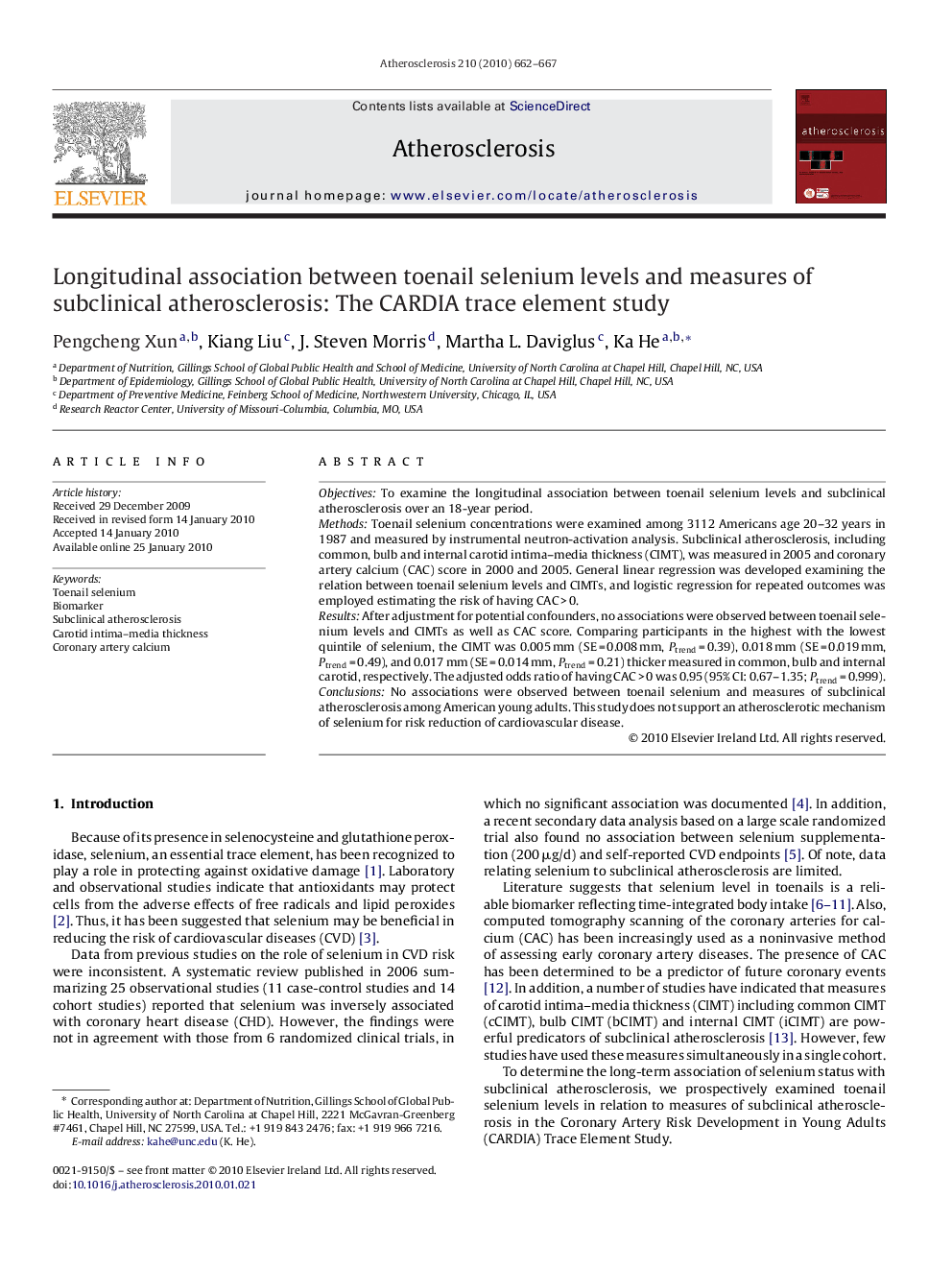| Article ID | Journal | Published Year | Pages | File Type |
|---|---|---|---|---|
| 5950745 | Atherosclerosis | 2010 | 6 Pages |
ObjectivesTo examine the longitudinal association between toenail selenium levels and subclinical atherosclerosis over an 18-year period.MethodsToenail selenium concentrations were examined among 3112 Americans age 20-32 years in 1987 and measured by instrumental neutron-activation analysis. Subclinical atherosclerosis, including common, bulb and internal carotid intima-media thickness (CIMT), was measured in 2005 and coronary artery calcium (CAC) score in 2000 and 2005. General linear regression was developed examining the relation between toenail selenium levels and CIMTs, and logistic regression for repeated outcomes was employed estimating the risk of having CAC > 0.ResultsAfter adjustment for potential confounders, no associations were observed between toenail selenium levels and CIMTs as well as CAC score. Comparing participants in the highest with the lowest quintile of selenium, the CIMT was 0.005 mm (SE = 0.008 mm, Ptrend = 0.39), 0.018 mm (SE = 0.019 mm, Ptrend = 0.49), and 0.017 mm (SE = 0.014 mm, Ptrend = 0.21) thicker measured in common, bulb and internal carotid, respectively. The adjusted odds ratio of having CAC > 0 was 0.95 (95% CI: 0.67-1.35; Ptrend = 0.999).ConclusionsNo associations were observed between toenail selenium and measures of subclinical atherosclerosis among American young adults. This study does not support an atherosclerotic mechanism of selenium for risk reduction of cardiovascular disease.
